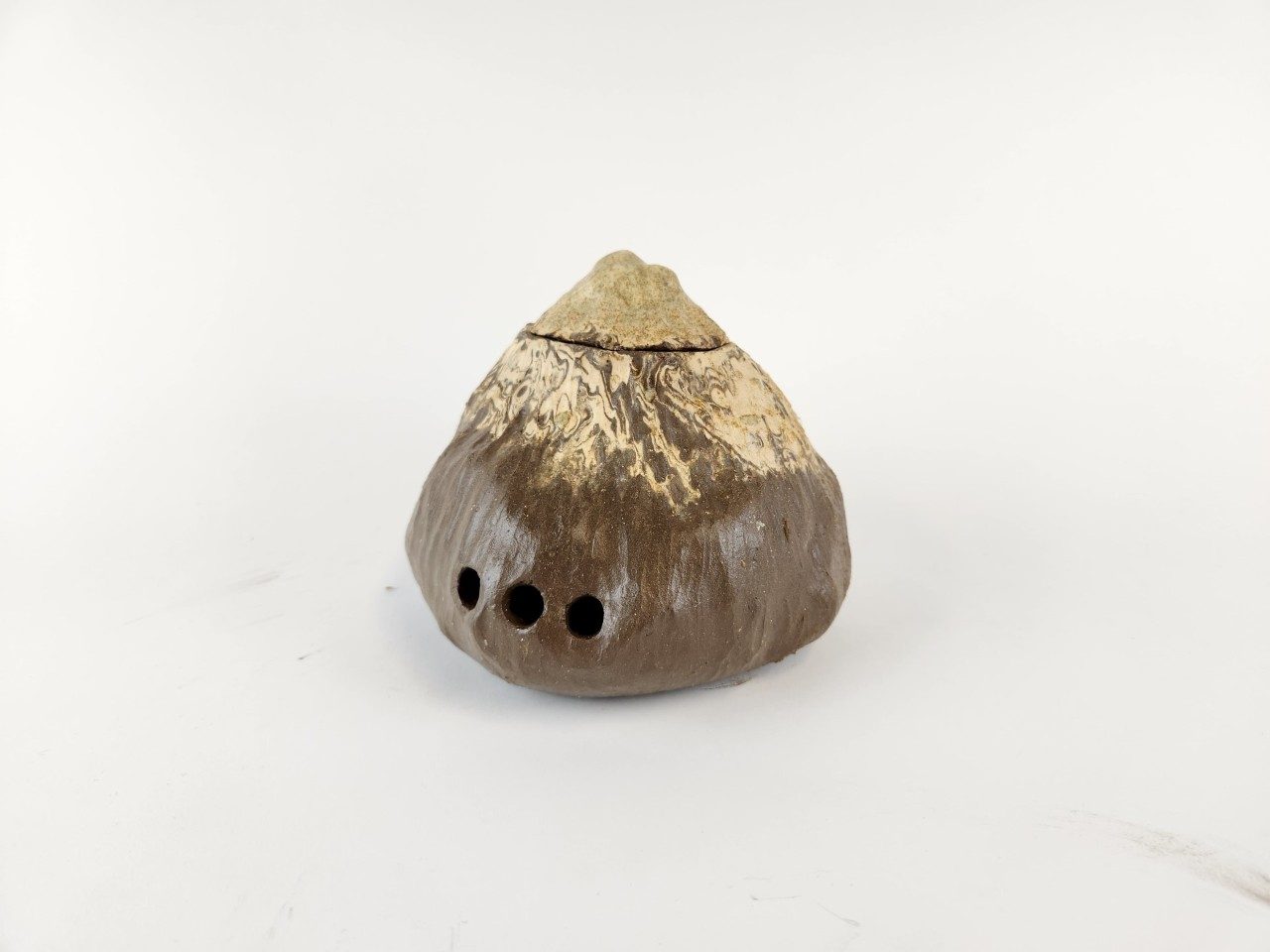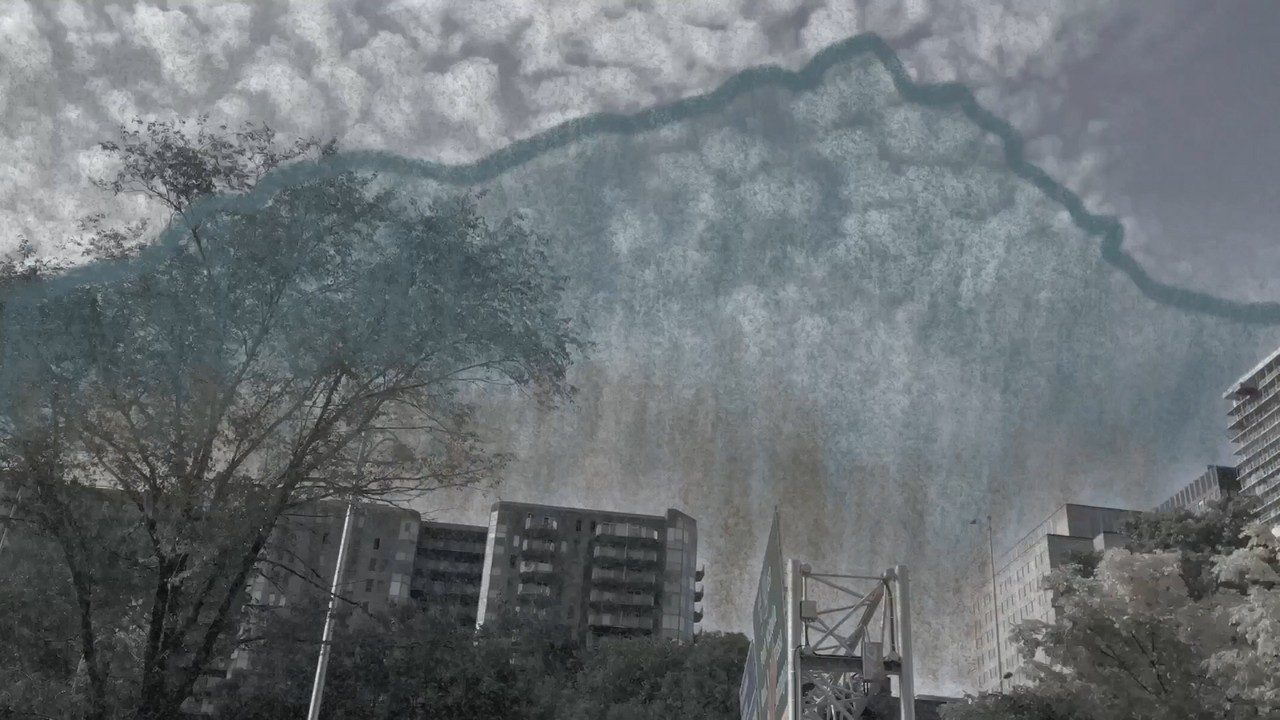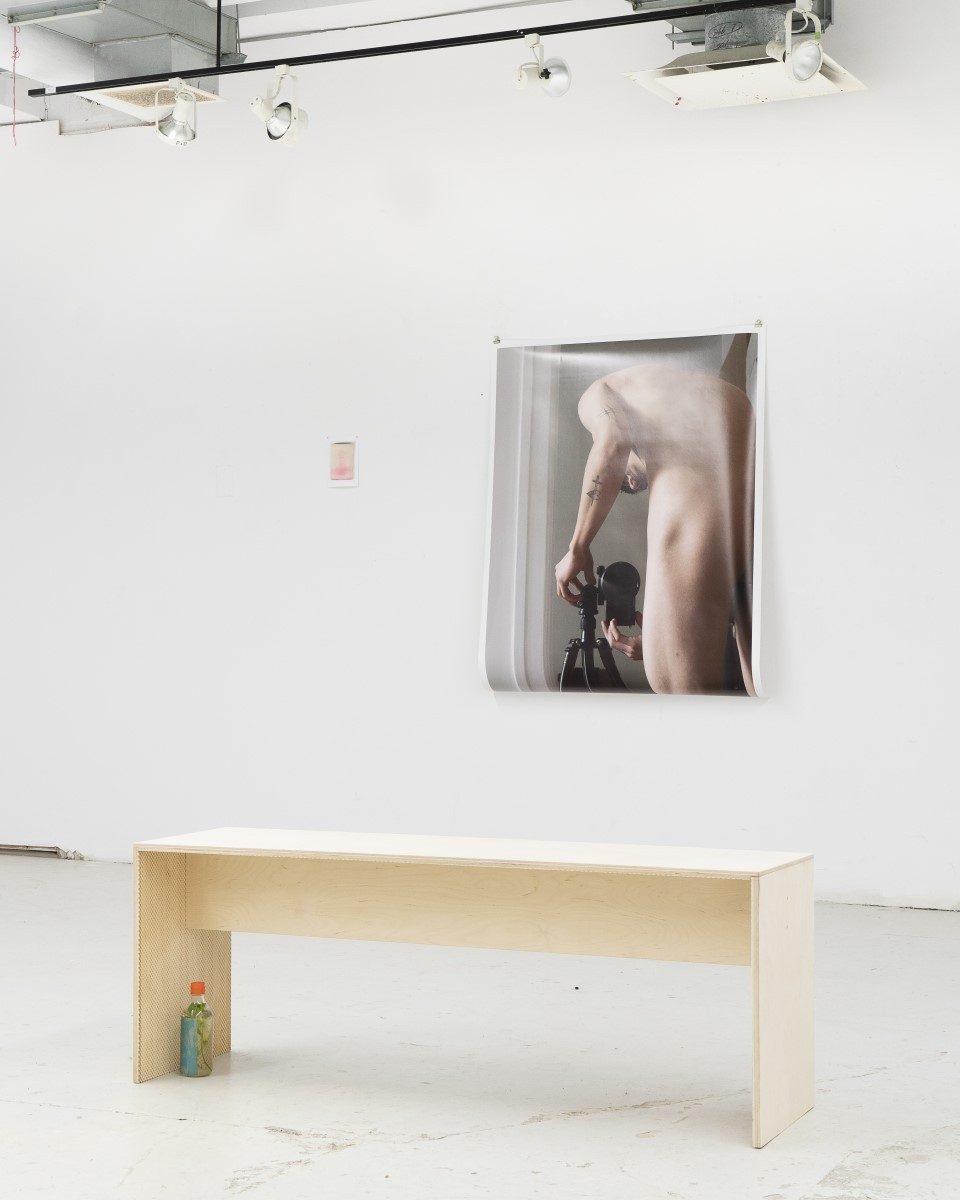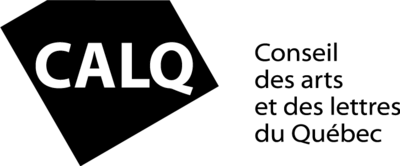A.Ilegades
July 24 - August 25, 2023
Vernissage: July 27, 2023, 5 pm to 7 pm
Curated by María Andreína Escalona De Abreu
Assistant Curator: Pierina Corzo-Valero
 Image by Miao Li
Image by Miao Li
Curatorial Statement
A.llegades
a: prefix.
- Signifies proximity, contiguity or intensity.
- Opposition, lack or deprivation of something.
llegado/llegada/llegade (arrived): from Spanish, past participle of the verb llegar (to arrive).
allegado/allegada/allegade (close, relative): adjective.
- Said of a person: close to another in kinship, friendship, treatment or trust.
- Arg., Chile, P. Rico and Ur. Said of a person who lives temporarily in someone else's house, usually without being related to the owner.
*The use of "e" in A.llegades replaces the gender-specific endings "o" and "a" in Spanish for an inclusive title in line with the linguistic revolution in Latin American countries.
Sometimes wrapped with the same leaf, often under the same name, sometimes erroneous, sometimes wandering, one day arrived, now allegades.
Under the premise "together in the diaspora," I examine with a group of eight artists questions of identity and aesthetics in relation to our respective arrivals, whether it be arrival in our host city, the unceded territory of Tiohtià:ke/Montreal, or in the local Latinx community. As first or second-generation immigrants from Chile, Colombia, Mexico, and Venezuela, at different paces, at different times, and in different packaging, we arrive(d), we are A.llegades.
We did not know each other, but our migratory journeys are uniquely intertwined. We do not create in the same way, but we orbit around similar concerns and experiences. The migration process never ends, and in this in-betweenness, we found each other.
Embodying a fraction of the Latinx diaspora and brought together under the term latinx/latine/latinos, the works in this exhibition reveal a desire to stay connected or rethink the connections we maintain with our culture of origin and its heritage. Over time, we have observed our cultural ties shifting in response to the multicultural Canadian context, divided between two linguistic cultures, causing a material pivot that seeps into our daily lives and shows up in the art we create. In this spirit, A.llegades presents works ranging from the textile to the textual, from the sculptural to the narrative, and from the performative to the participatory – all underlining material resilience.
The exhibition pamphlet, available as a takeaway, is an offering to the public and the artists. Made with the plantain leaves recuperated from our first gathering where we cooked hallacas together (a traditional Venezuelan dish) and mixed with abaca, corn husks and the labels of FOFA’s previous exhibition, this gift serves as a physical reminder of our intentional encounters. Complemented with music, hallacas, arepas, mezcal, yucca and mangos, our group dinners and individual meetings allowed us to connect and deepen our understanding of the different ways that affect and resilience translate in our practices and every day.
Looking at Sarabeth Triviño, one can recognize jute and wool as the common thread in the stories and journeys of migrant women, while in contrast, the personal garments collected and transformed by Denise A. Olivares create new paths to future friendships. Conversely, for Emiliano Moreno Quesada, portraiture and the subtlety of design provide a seat to think about the ambiguity of identity; in parallel, the portrait of Colombian singer J Balvin in the work of Juan Pablo Hernández Gutiérrez is critically inspired by overrepresentation and consumerism, alluding to Hito Steyerl’s "poor image." Continuing the dialogue on the effect of globalization, sheltered in the gallery wall, Armando Rivas' woodcut denounces the harsh reality of the migrant labour force; in front of it, Elsy Zavarce's installation and collaborative work offers a hopeful retelling of immigration stories, both alluding to the material resilience of our communities. And lastly, Marguerite Marion-Reyes' nostalgic desire to find the silhouettes of the Andes in the urban vistas of Montreal, and Armando Cuspinera's emphasis on landscape and soil through ceramics, invite the public to reflect on displacement, the process of integration into a new environment and the emotional connections to the land, from a Latinx-migrant perspective.
This collective and intergenerational exhibition began with the question “How do you live your latinidad in Montreal?” The various answers, both from the artists and the public, are now to be found, perhaps within this gallery, or as traces encrypted on the banana leaves and handmade paper. Perhaps, in these words too, beyond answers, we find only clues or even more questions.
A. Ilegades' upcoming programming
- Free mending workshop with Elsy Zavarce: Aug. 3rd, 2023, 2 pm to 5 pm
- Artist talk: Aug. 17th, 2023, 5 pm to 6 pm
- Finissage: Aug. 25th, 2023, 5 pm to 7 pm
FEATURED ARTISTS
 Image by Helen Park
Image by Helen Park

Courtesy of the artist
Bio
Armando Cuspinera (1994) is a Mexican artist and designer who focuses on the relationship between humans and nature through the sculptural redesign of objects and their function in everyday life. He completed a Bachelor of Fine Arts at the Universidad De Las Americas Puebla (UDLAP) and later a master's in industrial design at the National Autonomous University of Mexico (UNAM). He has participated in collaborative exhibitions such as XLII Encuentro Nacional de Arte Joven de Aguascalientes (2022) and in the 00 Biennial of Havana (2018).
Cuspinera’s research starts from the relationship with otherness, sometimes with other humans, other species or other elements of the ecosystem, and takes into consideration how an object, a circumstance or an action becomes a meeting point. Thinking about scale, materiality and symbolism, he designs sculptural objects through which the human is linked and involved with other living beings, and the ecologies in which they find themselves. He is interested in questioning how the traditional and the technological can be integrated into new proposals, coming from an ecocentric perspective.
Statement
This series of sculptures draws inspiration from the distinctive contours of mountains, volcanoes, and hills. The work delves into the concept of transitory geography, which emerges from the experience of moving and resettling in a foreign land. These sculptural forms embody a profound sense of monumentality, envisioning a dynamic and ever-evolving landscape. Each piece of the series evolves in different ways as they engage with their natural surroundings and undergo a gradual process of erosion. As time passes, the sculptures seamlessly integrate into their environments, transforming from representations of fictional landscapes into organic components of the very ecosystems they inhabit.

Courtesy of the artist
Bio
Juan Pablo Hernández Gutiérrez is an artist living in Tiohtià:ke (Montreal). He is pursuing a bachelor's degree in Painting and Drawing at Concordia University. He has recently participated in group shows such as An Anatomy of Apocalyptic Care at FOFA Gallery in 2023. In August 2022, Hernández Gutiérrez also participated in a residency as part of the Lab Program in Mexico City. In December 2022, Hernández Gutiérrez conducted a workshop titled Materialities in Fútbol, Football, Soccer as part of Montreal Monochrome hosted at Articule.
Statement
trapo (J Balvin, the business) appropriates an image of Colombian singer J Balvin from the internet, materializes it on a polyester surface and presents it upside down. Through these gestures of theft and repurposing, I materialize and explore the avant-garde potential of the “poor” image (as theorized by artist Hito Steyerl) through a compressed rendering of low quality and brightness. The surface of the work is made of bootleg soccer merchandise. The characteristics of the light, quick-drying and malleable fabric, as well as the image of J Balvin, resonate with techno-capitalist imperatives of speed, mass-production, and quick distribution of low-quality goods. Image and surface thus become family. By appropriating the craft of tifo-making (large choreographed visual displays done by fans in stadium stands), and by presenting the image upside-down as a form of subversion, I position the piece as the rival of the image itself. The piece proposes an immersive contemplation inviting the public to critically analyze the absurdity of what composes trapo (J Balvin).

Bio
Marguerite Marion-Reyes is a Chilean-Canadian visual artist and educator currently pursuing an M.A. in Art Education at Concordia University. Her work is linked to her experience of continuous displacement from one country to another and the search for home and belonging. Marion-Reyes works mainly with sculpture and installation, where transient memories are intended to be kept alive, evoking nostalgic and imaginary places. After moving to Montreal, her practice shifted to video art, where layering and drawing have opened new possibilities for exploring nostalgia, the grief of landscape, and the creation of liminal spaces.
Statement
It's been almost two years since I moved from Chile to Canada. One thing I am constantly asked is what I miss about Chile, and I cannot help but answer that it is the Andes Mountains. What makes the landscape in Chile special is that the mountain follows you constantly. Wherever you are, on one side is the ever-changing, yet present mountain. This experience is lived differently in Montreal, and that's what led me to create Buscando la Montaña, an experimental video that uses the technique of rotoscoping.
To create this video, I asked 11 people currently living in Chile: How do you imagine your daily life without the Andes Mountains? Drawing from these answers, I developed a composite story. Meanwhile, in Montreal, I recorded a walk where I captured footage of the tallest elements of the city. Looking for a foundation, and a connection with the city, searching for my own compass; looking up, as if the buildings were mountain peaks. By connecting the Chileans’ story to the walking video, I draw a line; a line that unites, transforms and mutates as I move forward; a line that listens and sees around it; a line that becomes a mountain. An imaginary place emerges from the drawing, an in-between place. From this line and this mingling between two places emerges Aquí y Allá (Here and There), a collaborative installation that invites people to draw and write, reflecting on the question: Being here, what do you miss from there?

Courtesy of the artist
Bio
Emiliano Moreno Quesada is an artist based in Tiohtià:ke – Mooniyang (Montreal) who works with photography, sculpture, and installation. His works often use humour and appropriation to create a complex web of ideas and associations. Drawing inspiration from memes and internet culture, Moreno Quesada seeks to explore their functions in art history and contemporary life by bringing them into physical form. As a Mexican immigrant raised in Canada, his work centres on notions of identity and place, particularly how he occupies an in-between space, a zone of transition. He is interested in exploring how this state can be translated and linked to his previous methods of working, as he investigates his identity as a collection of images and contradictory objects.
Statement
He looks over at a father and son and boldly asks, "What are you?"
Banco-02 is part of an ongoing project that explores the ambiguity of identity.
This project aims to start a conversation surrounding the duality of objects and artworks and how they may function in a space such as a gallery. Specifically, I am interested in how the codes of such objects and architecture may be interrogated to reflect the instability of artwork classification and audience perception.
Through anonymity, the work may express without being explicit, and materialize the unrest that can come with existing somewhere in between.

Courtesy of the artist
Bio
Denise A. Olivares is a Chilean-born art educator and interdisciplinary artist working and residing in Tiohtià:ke/Montreal. Inspired by her family's history and culture, her textile and installation works focus on themes of memory, identity, and the archive. Through photography, her “urban sightings” often draw on a minimalist approach, situated somewhere between photo documentary and serial photography. Over the last decade, she has been developing a body of work that explores her identity, body, and movement through photo and video performance.
Statement
The patterns, colors, textures, and scents from our clothes and the fabrics that surround us in our day-to-day, reveal traces of our lived experiences. Whether we have a close attachment to these textile materials or not, there is a story to be told. My fibres practice draws on these life stories to reanimate the past and re-situate memories in the present. In doing so here, past memories become part of a current shared experience.
Beginning with found bed sheets and personal accumulated garments, I requested a clothing item from each person participating in A.llegades. Each item was deconstructed and assembled into a woven piece and incorporates text contributions connected to the memories of our unique histories while mapping a combined narrative with personal photographs.
During the making of this piece, each phase contained repetitive movement that required endurance to complete. Through its circular form(s), this artwork signals to notions of unity and continuous movement that integrates a mixed media approach involving crochet, image transfer, and embroidery techniques.
![Dentro del Almacen [Inside the Warehouse] Digital rendering of an incomplete speculative architectural creation with renaissance and Greek inspiration.](/content/concordia/en/finearts/about/galleries-venues/fofa-gallery/exhibitions/2023/a-ilegades/_jcr_content/content-main/grid_container_2121536764/grid-container-parsys/offset_block/adaptiveimage.img.full.medium.jpg/1689958753287.jpg)
Courtesy of the artist
Bio
Armando Rivas is a Venezuelan artist currently immigrating to Canada. He is a flunked architecture student turned renegade carpenter and community organizer. His current work focuses on the intersections and relationships formed between the economy of labour conditions and technological development, under the framework of architectural history.
Statement
Dentro del Almacen [Inside the Warehouse] is a wood carving that draws inspiration from medieval European sculpture as well as Mexican muralist traditions. The small tablet is made of scrap wood from broken pallets scavenged from the different warehouses I have worked in. They have been glued together to make a solid mass onto which I carved the image using a CNC router machine. The result is a montage of images of different life-threatening experiences I went through while working under precarious conditions. As if building a memory collage, the imagery includes details of stories I have heard from other workers around the country.
I have been thinking a lot about how warehouses are a staple of the post-industrialised Canadian city. The warehouse is like a sandbox for enterprise, with vast amounts of space that can be reconfigured into whatever a business requires. Warehouse work has provided me access to ample raw materials and tools, storage space for my artworks and learning experiences to complete this project. That being said, warehouses are also sites of difficult labour and often lack basic comforts, such as insulation or even bathrooms. They feel very isolating with their bare metal walls and echoing vaults. Warehouse workers use a lot of dangerous tools and are exposed to plenty of toxic substances. While warehouses are a place of creative possibility, their work environment comes with significant health risks for their workers.
My observations have turned into a meditation on the cost of living afforded by the industrial world, but also by the art world. The warehouse is an essential component to the availability and abundance of the products that make up our contemporary lifestyles. However, these sites also highlight how our lifestyles rely on pollution and the exploitation of marginalized groups who labour in these hazardous environments.

Courtesy of the artist
Bio
Sarabeth Triviño is a textile artist of Chilean origin who lives and works in Tiohtià:ke/Montreal. In 2008 she became a professional artisan member of the Conseil des métiers d'arts du Québec. In 2017, she obtained her bachelor's degree in visual and media arts from UQÀM, and is currently pursuing a master's degree in Fibres & Material Practices at Concordia. Her work is developed through a hybrid practice in visual arts with references to arts and crafts. Her projects integrate techniques such as crochet, macramé, knitting, and embroidery. Her political textile practice is inspired by environmental and social issues woven together with feminist overtones.
Statement
Their walking feet reveal a destiny. Their paths lead them through space and time, gradually taking hold of these territories as a symbol of resistance. Their footprints make them transcend in time as a trace of their identities, of a past time and the promise of a better future. Like an archeological act, I dig layer by layer until I find women's stories. These stories resound and challenge us with an urge for political vindication and a need to contest past and present injustices. Their footprints bear a living testimony of life: they have taken over the streets; they have crossed borders; they have raised their voices. Big and small feet covered in soil are walking in search of new paths. They all have names, families, origins, and ancestors. Women defenders of forests and rivers, guardians of seeds, searchers of bones; women who walk forging paths, reconfiguring new territories and defying boundaries to build new futures. They do not walk alone, they accompany, contain, mobilize, and organize (themselves). Their footprints are part of the historical legacy left by their bodies, and their steps continue in the search for truth and justice.
-----
In this piece, the artist is using embroidering on jute to recall traditional Chilean arpilleras, when women organized collectively to denounce and tell their stories through embroidered panels during the violent socio-political context of the military dictatorship in Chile.

Courtesy of the artist
Bio
Elsy Zavarce is a multidisciplinary visual artist whose work has been showcased in Venezuela, Canada, and the US and is featured in both private and public collections, including the Museum of the Americas. She has participated in numerous exhibitions and undertaken individual projects, earning recognition and accolades in the field of arts, including a Special Mention in the Aragua Art Salon (2012) and First Prize in three-dimensional work at the Caribbean Art Salon (2000). Noteworthy among her accomplishments are her artist-curatorial works, such as Ene Incident (1999-2014), Body in Question (Cuerpo en Cuestión) (MACZUL 2018), and Confined Bodies (Maczul 2020). Currently pursuing a Ph.D. in the Department of Art Education at Concordia University, Zavarce focuses on exploring the roles of artists, educators, and curators in fostering communities of socially engaged practices, and co-creating urban spaces that inspire imagination and cultivate a sense of belonging, resilience and resistance. In addition, she coordinates ESCOLARTE, an Educational Program at MACZUL (Museum of Contemporary Art of Zulia)
Statement
Reparative Mapping delves into the concepts of borders, territories, displacement, and representations. The installation comprises mended fragments from my 2014 work, Arqueologia Ludica II: 100 días, which paid homage to the students who fled Venezuela in early 2014 due to the precarious socio-political situation. At that time, little did I know that I would become part of the Venezuelan diaspora myself.
The duckling-shaped pieces were originally cut from a blue family quilt and have now been embroidered and repaired along their borders. In Reparative Mapping, these pieces were collectively mended by the group of participating artists in A.llegades. They are displayed on the wall in conjunction with an upside-down map of the Americas, aligned with the countries of origin of each artist. This illustrated map is a direct allusion to America Inverted (1943) by Uruguayan artist Torres Garcia. A playful video featuring an animated map guides us to question and engage in a dialogic representation of the relationships between migratory movements and borders.
For me, the act of repairing and mending the 2014 installation with the community has been a healing process of building connections and cultivating meaningful relationships. Initially serving as a coping mechanism for migratory grief, my exploration has now evolved to envision new ways of visualizing territories, displacements, and borders
About the Curatorial Team
María Andreína Escalona De Abreu is a Venezuelan visual artist, writer, and independent curator based in Tiohtiá:ke/Montreal. She obtained a BFA in Fibres and Material Practices at Concordia University in 2022 and has since been developing her curatorial practice as FOFA Gallery’s curator in residence. Escalona’s practice aims to intersect visual, linguistic, textile and printed forms as a means to connect and emote with her community, while offering new perspectives to a wider audience. Her work is a love letter to her Venezuelan roots and Canadian present.
Pierina Corzo-Valero (she/they) is an interdisciplinary artist and writer, currently pursuing a BFA in Fibres and Material Practices at Concordia University. They have been working at the FOFA Gallery as a communications assistant and gallery attendant since 2022. Corzo-Valero wrote an article on Queer Phenomenology and Brazilian Art that was selected by CUJAH for publication in 2023. Their installation works have been featured in group exhibitions at the CTRL Lab, the VAV Gallery and Galerie onze. Lately, they’ve been focusing on their weaving practice, delving into the intersections between text and textile, weaving and writing.
Acknowledgements
Emiliano thanks María A. Escalona, the FOFA Gallery, Isabelle Mae-Yen Bredt, Pablo Perez Diaz, Ayisha Thier and Stamátios Fragos.
Elsy thanks the artists of A.llegades, all the participants for mending and sharing their stories with her, and Alejandrina H. Z. for her technical support.
Juan Pablo thanks Liv Aspden and Kevin Teixera.
Marguerite thanks the people in Chile who contributed to the video with their answers, and who allowed her to imagine a liminal place uniting the here and there. Moreover, she thanks those who will connect with the artwork, and leave a piece of them in the wall installation.
Sarabeth thanks all the women who kindly contributed their footprints and stories to the project.
María thanks Helen Park, Miao Li, Armando Rivas, Eli Bjedov-Stanković, eunice bélidor and the Conseil des arts et des lettres du Québec.
Pierina thanks María for her trust and for allowing them to contribute to such a significant project. She also thanks Jasmine Sihra and Joé Côté-Rancourt for their extended support in this exhibition.
Armando R. thanks The Big Boss, La Abuela, El Hombre Bravo and the entire FOFA team.


